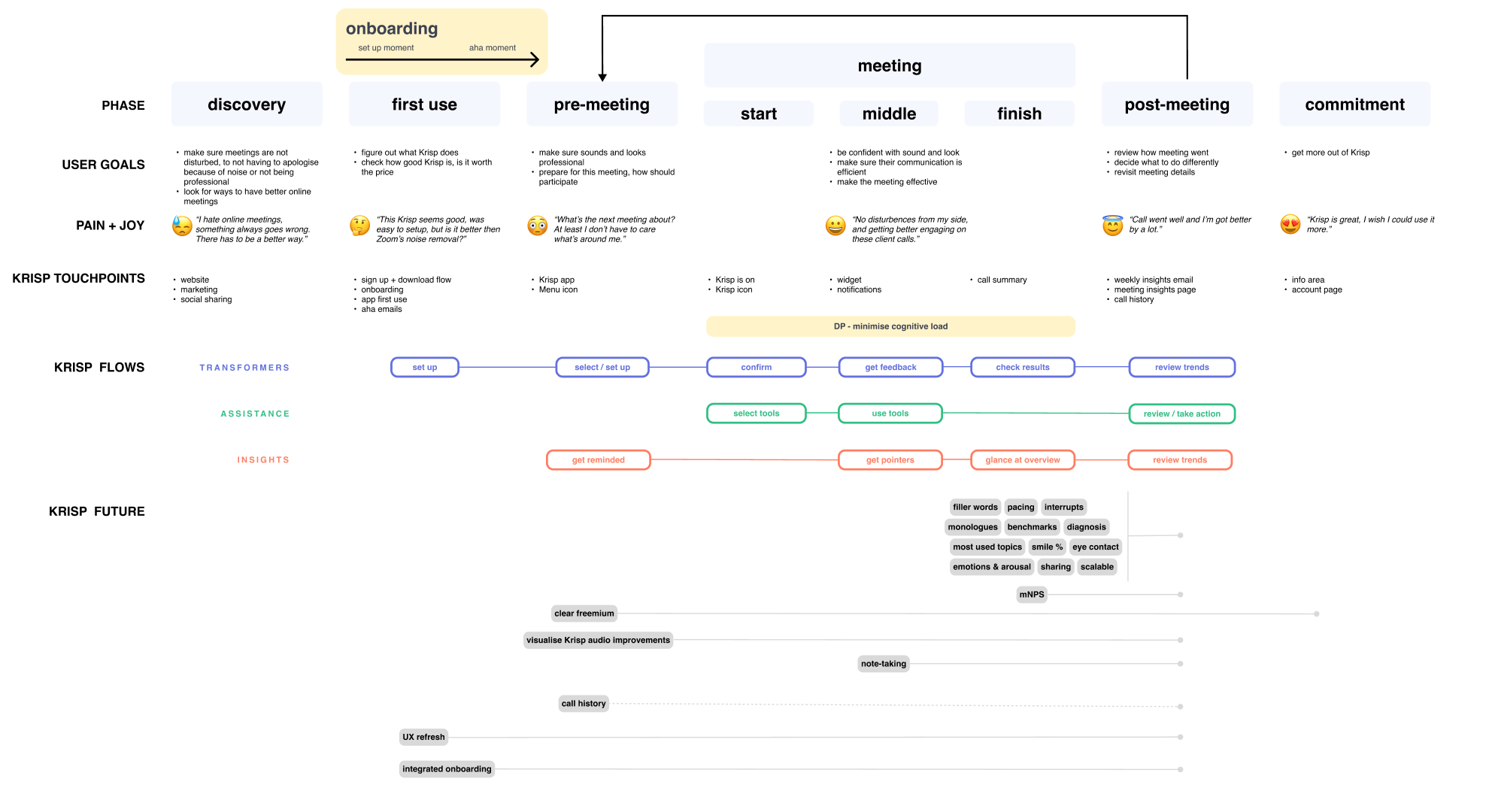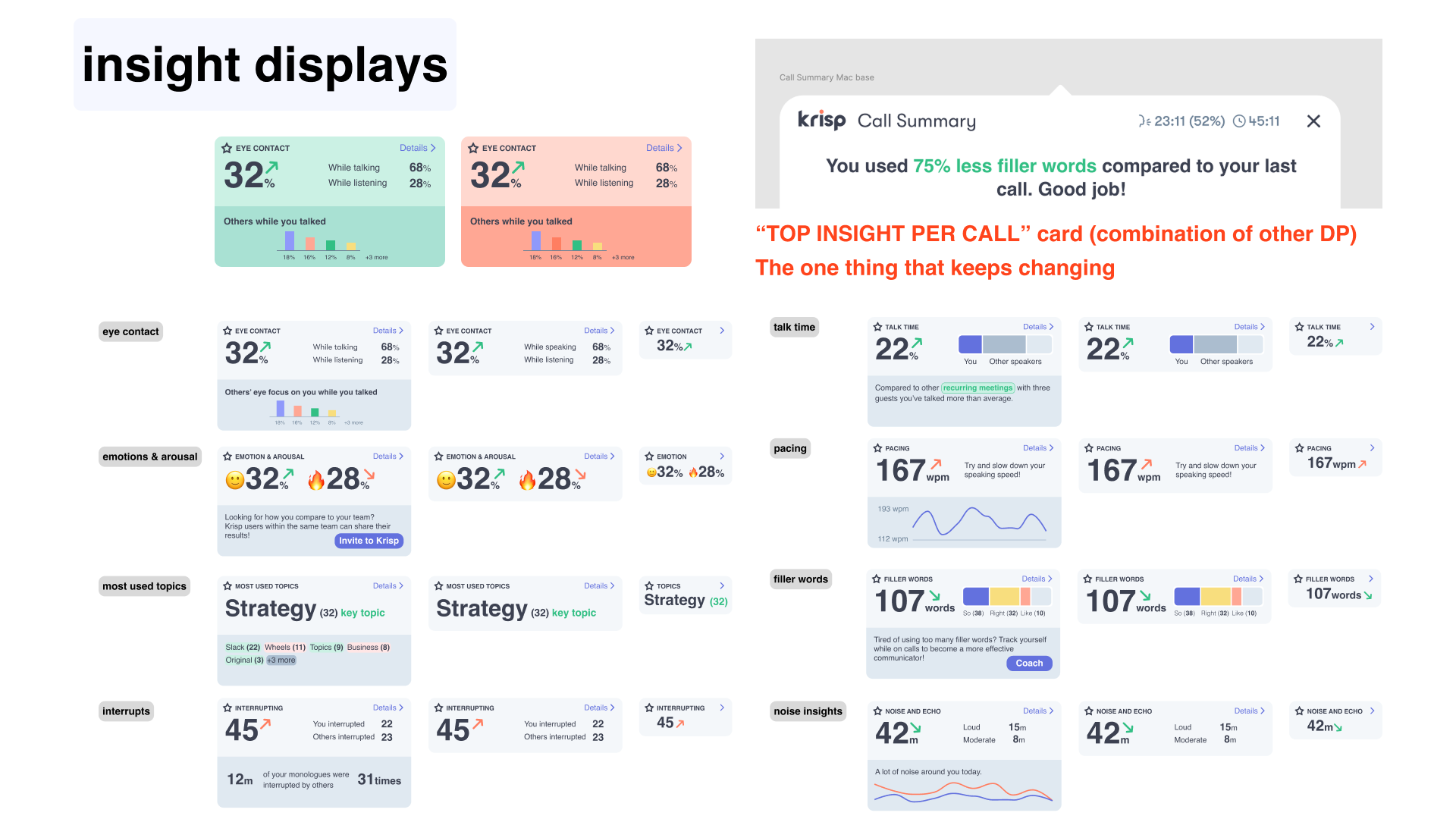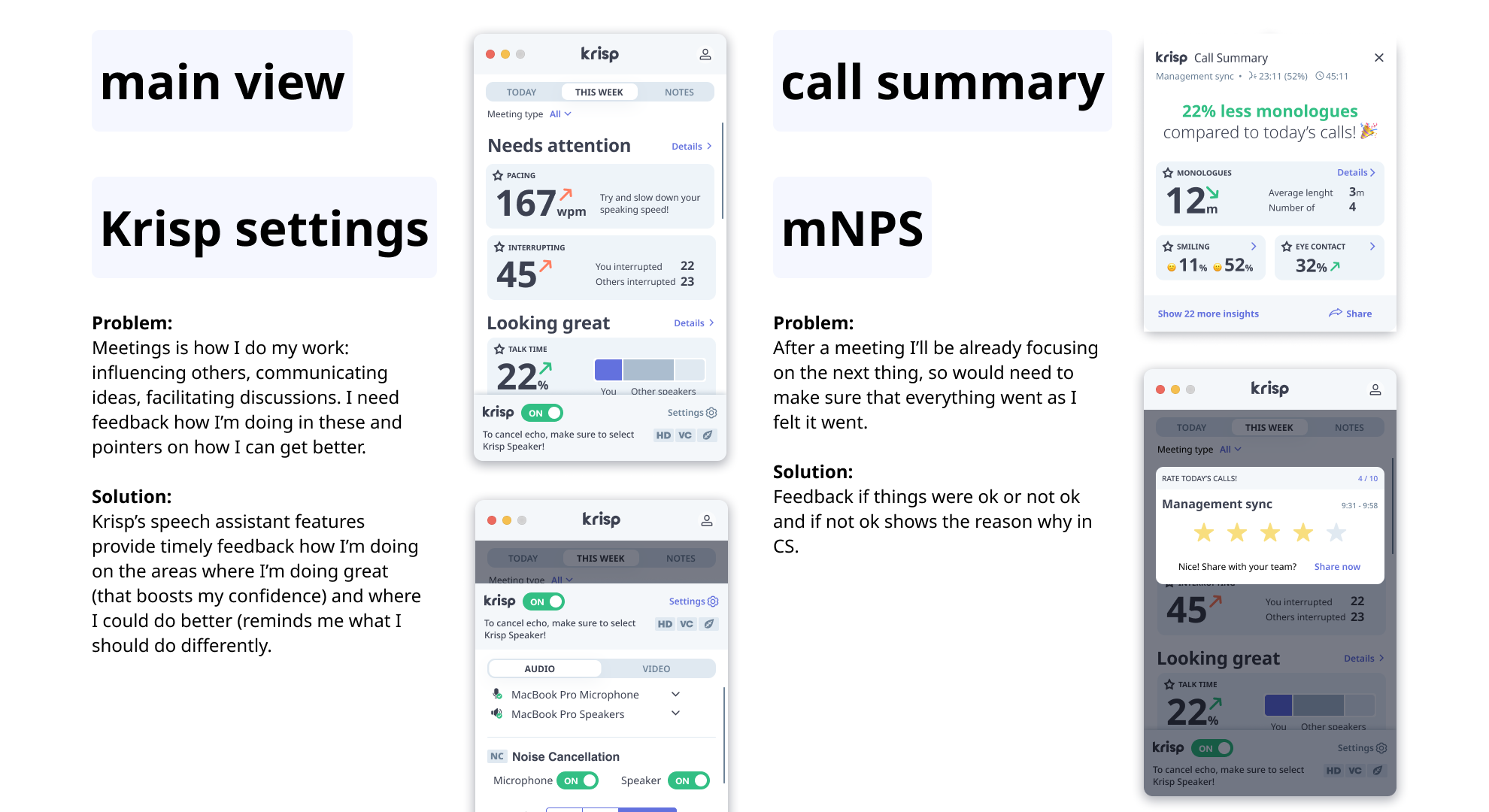Shaping product strategy through design vision
As the lead designer at Krisp, I faced a key challenge: the product was being built feature-by-feature as new technology became available, resulting in a fragmented user journey and a lack of clear strategic direction. I took on a project to create a product vision that would unify our efforts, address user problems, and drive long-term strategy.
My goal was to prototype the future with a few compelling hero images and interactions, that would energize the team and allow for better prioritization. Partnering with a product director and a founder, I led a highly iterative, four-week process. I focused on exploring divergent ideas and converging on a solution based on feedback from stakeholders, our design team, and users. This fast, iterative approach was essential to validate our ideas quickly and get buy-in from the organization.

I used a user journey map to centralize all of our insights and identify key interactions where we could elevate the experience. My explorations, which ranged from a “today view” to a more collaborative focus, ultimately landed on a “speech coaching” direction. This was a clear user problem we could aim to solve, and a way to differentiate ourselves in the market.

I designed a unified flow that addressed core user problems and showcased the product’s future. I focused on hero interactions like the onboarding and in-call experiences, defining a seamless journey that connected the app’s various features. This project also provided the tech team with a clear roadmap, turning abstract ideas into tangible designs that could be measured and built upon.

While the product ultimately pivoted, the project was successful. As we could see where the product direction would take us, it showed the stakeholder group we would need to make a pivot. The design vision provided the clarity to make this major strategic shift, and many of our ideas influenced the tech team’s roadmap down the line. This experience was key to my belief that design is a powerful tool for prediction, it allows us to show, not just tell, a compelling story about the future and shape the product’s, and ultimately the company’s direction.
